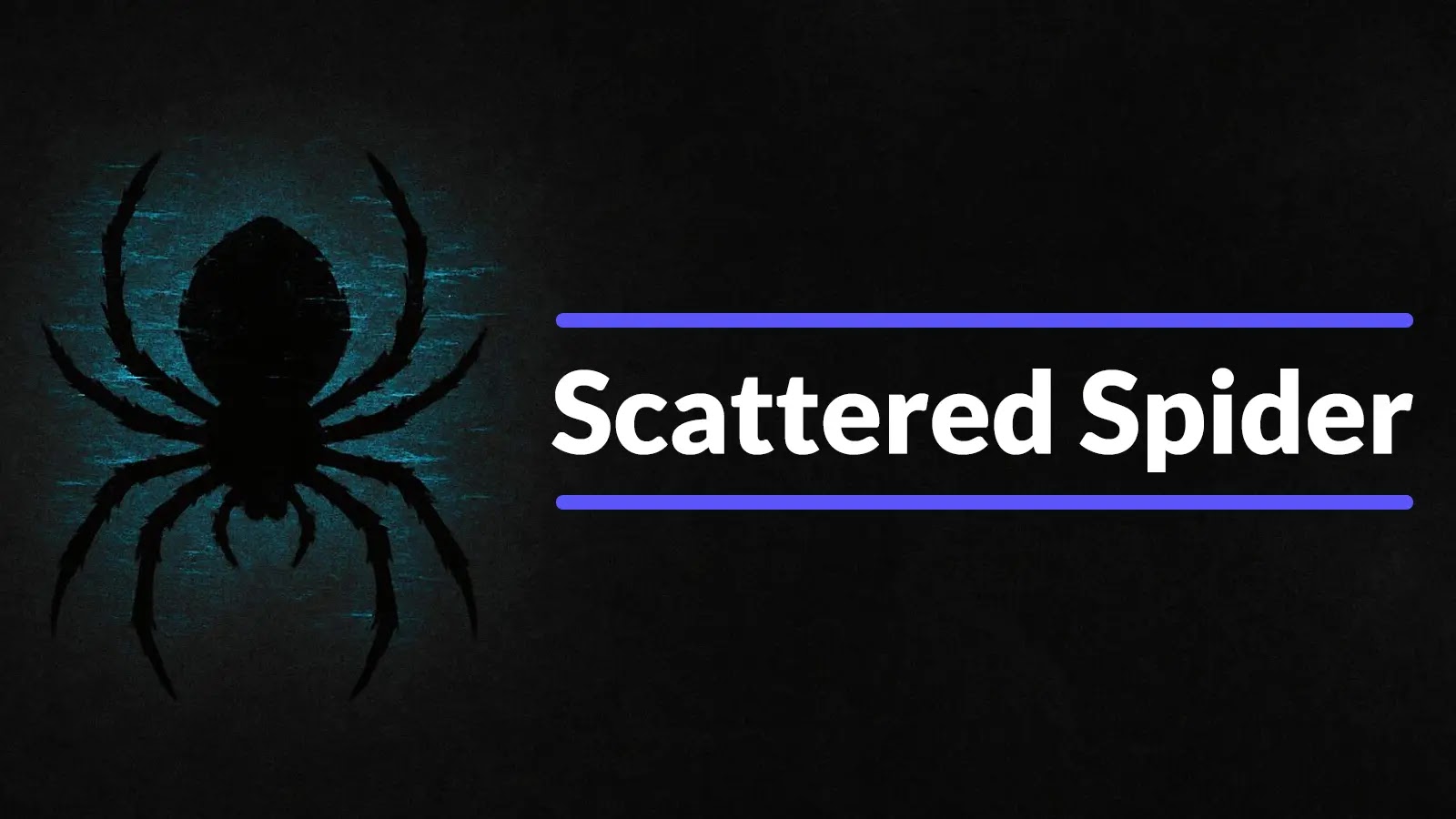
Microsoft Details Scattered Spider TTPs Observed in Recent Attack Chains
In mid-2025, a new and unsettling wave of targeted intrusions began to ripple across multiple industries. Attributed to a highly adaptable threat group known by various names—Scattered Spider, Octo Tempest, UNC3944, Muddled Libra, and 0ktapus—these operators have dramatically escalated their tactics. Initially leveraging relatively straightforward SMS-based phishing campaigns coupled with innovative Adversary-in-the-Middle (AiTM) techniques, their methodologies have since evolved into a sophisticated blend of social engineering and stealthy network compromise. Microsoft’s recent detailed analysis of their Tactics, Techniques, and Procedures (TTPs) provides critical insights for organizations grappling with this persistent threat. Understanding Scattered Spider’s operational evolution is paramount for robust defensive strategies.
The Evolution of Scattered Spider’s Attack Chains
Scattered Spider’s initial campaigns in mid-2025 primarily relied on SMS-based phishing (smishing). These messages typically directed targets to malicious websites that mimicked legitimate login portals. The key innovation here was the use of Adversary-in-the-Middle (AiTM) domains. AiTM attacks, sometimes enabled by tools like EvilGinx, effectively proxy authentication requests between the victim and the legitimate service, allowing the attacker to steal session cookies even after multi-factor authentication (MFA) has been successfully completed by the victim. This circumvention of MFA was a significant shift, as many organizations had strengthened their defenses based on MFA implementation.
However, the group’s tactics did not stagnate. Recognizing the increased awareness surrounding simple smishing, Scattered Spider has refined its approach. Their current modus operandi combines:
- Sophisticated Social Engineering: Moving beyond simple phishing links, the group now engages in more elaborate social engineering schemes, often involving pretexting and direct communication with targets to gain trust or elicit specific actions.
- Stealthy Network Infiltration: Once initial access is gained, whether through AiTM or other means, the focus shifts to lateral movement, privilege escalation, and persistent access within the compromised network. This involves exploiting misconfigurations, weak credentials, or known vulnerabilities.
- Identity-based Attacks: A significant emphasis is placed on compromising user identities, particularly administrative accounts, to gain broader access and control over cloud environments and on-premises infrastructure.
Key Tactics, Techniques, and Procedures (TTPs)
Microsoft’s analysis highlights several recurring TTPs employed by Scattered Spider. These include, but are not limited to:
- Initial Access via AiTM Phishing: Though evolving, this remains a primary vector. Tools that facilitate session cookie theft post-MFA are central to this.
- Social Engineering for Credential Theft/MFA Bypass: Direct interaction with employees, often impersonating IT support or other internal entities, to coerce them into providing credentials or approving MFA prompts.
- Lateral Movement and Persistence:
- Utilizing legitimate tools (Living Off The Land – LOTL) to avoid detection.
- Exploiting remote access services (e.g., RDP, SSH).
- Creating new user accounts or elevating privileges of existing compromised accounts.
- Cloud Environment Targeting: Given the widespread adoption of cloud services, the group actively targets cloud identities and infrastructure to gain access to sensitive data and critical systems.
- Data Exfiltration: Once valuable data is located, the group employs various methods to exfiltrate it, often using cloud storage services or encrypted channels.
- Ransomware Deployment (Post-Compromise): In some instances, after initial reconnaissance and data exfiltration, the group has been observed to deploy ransomware, adding a significant financial extortion layer to their attacks. While no specific CVEs for Scattered Spider’s custom tools are widely published, their reliance on social engineering and credential theft often bypasses traditional vulnerability exploitation. However, misconfigurations leading to weak MFA, or unpatched systems contributing to easier lateral movement could be related to general security best practices rather than specific CVEs for their methods.
Distinguishing Characteristics of Scattered Spider
What sets Scattered Spider apart from other threat actors?
- Adaptability: Their rapid evolution from simple smishing to complex social engineering and network operations demonstrates a high degree of adaptability.
- Focus on Identity Theft: A strong emphasis on compromising and abusing legitimate user identities to bypass security controls.
- Cross-Industry Impact: Their broad reach across various industries suggests opportunism and a lack of specific sector targeting.
- Blended Threat Approach: Combining sophisticated social engineering with technical exploitation and, at times, ransomware deployment.
- Living Off The Land (LOTL) Techniques: Extensive use of built-in system tools and legitimate software to blend in with normal network traffic and evade detection.
Remediation Actions and Defensive Strategies
Defending against a sophisticated and adaptive group like Scattered Spider requires a multi-layered approach focusing on identity, access, and vigilance.
- Strengthen Multi-Factor Authentication (MFA): Implement phishing-resistant MFA methods (e.g., FIDO2 security keys, certificate-based authentication) wherever possible. Avoid relying solely on SMS or push-notification MFA, which can be susceptible to AiTM attacks and social engineering.
- Employee Training and Awareness: Conduct regular, sophisticated social engineering training. Educate employees on phishing, smishing, vishing, and common social engineering pretexts. Emphasize verification procedures for unusual requests.
- Identity and Access Management (IAM):
- Implement strong password policies and enforce regular changes.
- Utilize Privileged Access Workstations (PAWs) for administrative tasks.
- Employ Just-Enough-Access (JEA) and Just-In-Time (JIT) access for privileged accounts.
- Monitor for unusual login patterns, impossible travel, and MFA fatigue attacks.
- Endpoint Detection and Response (EDR) & Extended Detection and Response (XDR): Deploy robust EDR/XDR solutions to detect suspicious activities, lateral movement, and the use of legitimate tools for malicious purposes.
- Network Segmentation: Implement network segmentation to limit lateral movement if an attacker gains initial access.
- Proactive Threat Hunting: Regularly hunt for indicators of compromise (IoCs) and TTPs associated with Scattered Spider and similar groups.
- Cloud Security Posture Management (CSPM): Continuously monitor and secure cloud configurations to prevent common misconfigurations that attackers might exploit.
- Incident Response Plan: Develop and regularly test a comprehensive incident response plan, including communication protocols for social engineering incidents.
Conclusion
Scattered Spider represents a persistent and evolving threat that demands a proactive and comprehensive security posture. Their ability to rapidly adapt TTPs, combine social engineering with technical exploits, and their focus on identity compromise makes them a formidable adversary. By understanding their methods—from initial AiTM phishing to sophisticated lateral movement and potential ransomware deployment—organizations can implement targeted defenses. Prioritizing robust MFA, continuous employee training, stringent identity and access management, and advanced threat detection capabilities are essential steps in mitigating the risk posed by this highly effective threat group.





